MOTAT’s Queen of the Rails
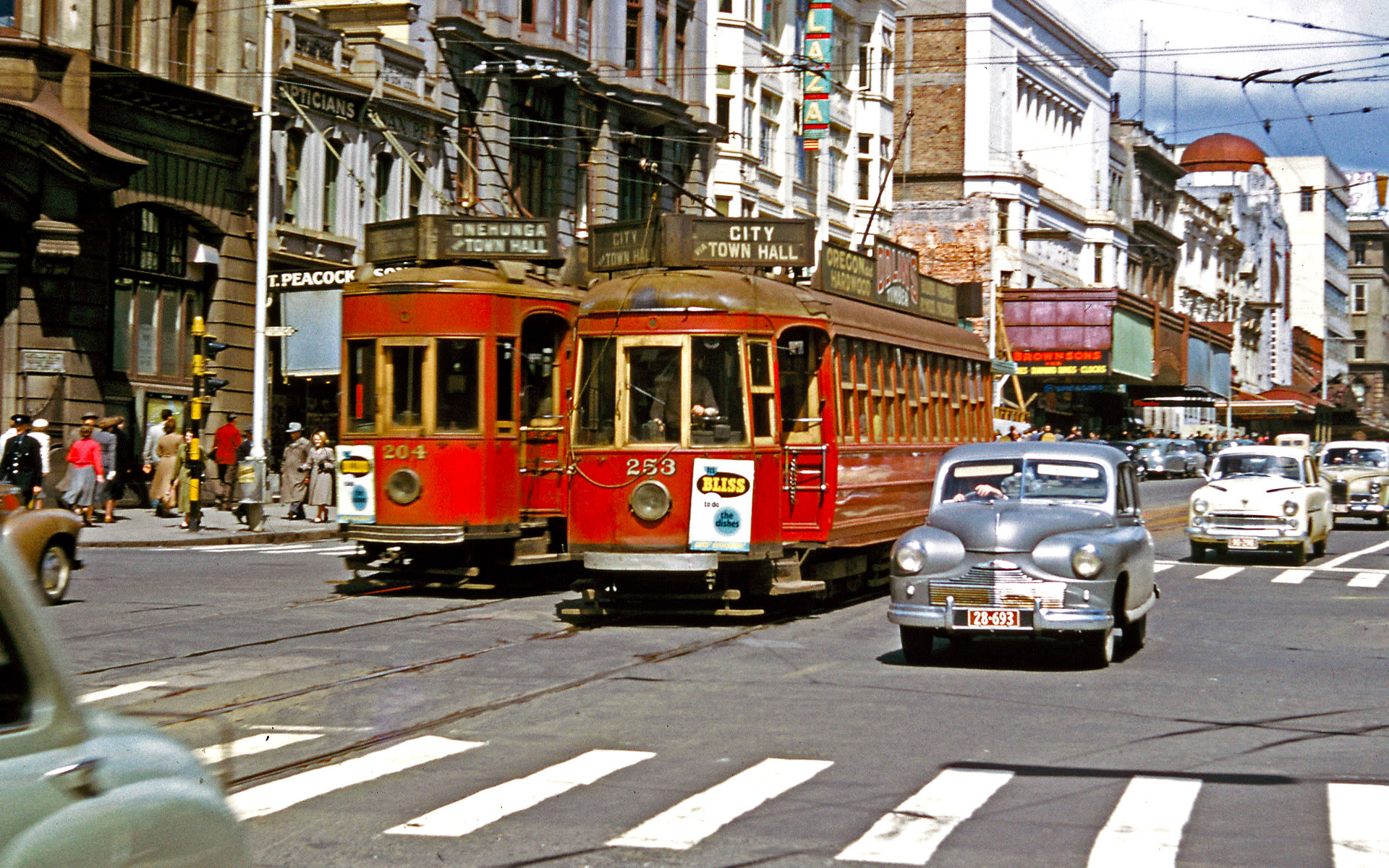
Tram No. 253 is representative of the ultimate in tramcar design for Auckland – the “1937 - Streamliner Class” and was one of six of these trams constructed in the Auckland Transport Board Workshops in Royal Oak.
The 1937 Streamliner class were the last trams built for Auckland and were recognisable by the rather bulbous sides and rounded ends, although the class still retained the rather old fashioned wooden slatted seats and the now very familiar ratchet half-drop windows.
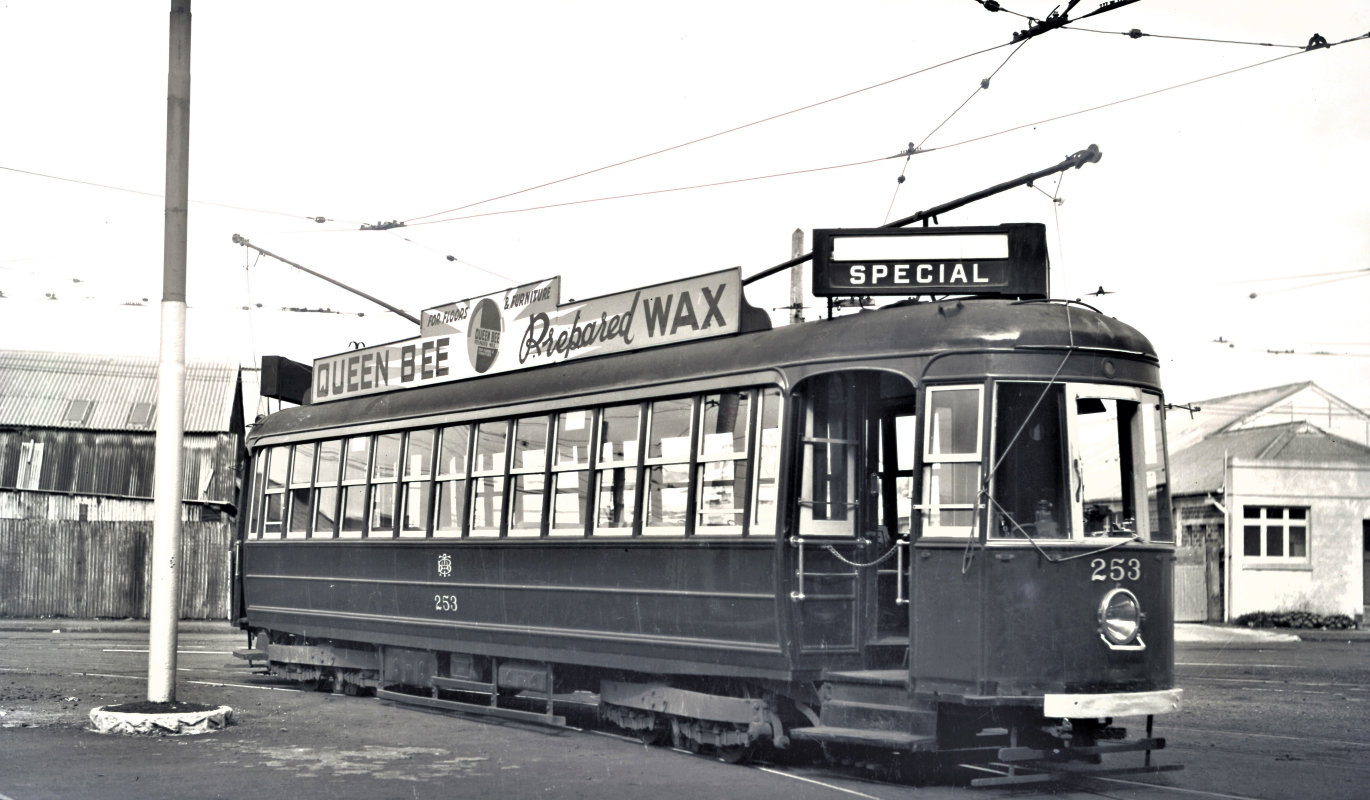
No.253 was the last of this class to enter service in 1940. As with the other five trams in this class, it featured modern braking systems and was fitted with 27-inch diameter wheels, on what was considered at the time, very modern 4 motor roller-bearing EMB (Electro Mechanical Brake Company of England) bogie trucks. This allowed the body to sit lower to the ground than the older trams with their 33-inch wheels.
No.253 had been chosen as a testbed for a possible modernisation of the Auckland tram fleet. The tram was fitted with four quite powerful electric traction motors which enabled it to achieve some remarkable speeds around Auckland streets. Added to this was a new type of control system that included Regenerative Braking.
Today this is standard in most electric vehicles – when braking, the electric motor in battery operated cars is switched into a generator which then charges the batteries. On Auckland’s modern electric trains, when they are slowing down to come into a station, the motors are switched into generators and feed the power generated back into the overhead lines for other trains in the vicinity to use. It’s a great way to reduce electricity consumption making the trains very cost effective. Back in 1940 however, this was very new technology for the Auckland tramway system.
No.253 seemed to run mostly on the Herne Bay to Three Kings route, with Victoria Street, College Hill and the ups and downs of Mt Eden Road, perfect to showcase the regenerative braking qualities on the tram. This worked well during the busy peak periods when there were many trams in that section of line to soak up the power being fed into the overhead by 253 when braking. However, it was found that on weekends, with not many trams in service, the back-feed of power went all the way back to the substations, where the mercury-arc rectifiers were not designed to receive power back and, like blowing out a candle, it literally blew out the mercury arcs and caused a power failure.
Because of 253’s thoroughbred qualities, very soon after entering service, the tram earned the nick-name of the “Queen Mary” after the ocean liner of the same name, that was braking speed records across the Atlantic at that time. Ultimately, No. 253 became the pride of the Auckland tram fleet. Motormen had to be especially selected to drive 253, but with shift changes, sickness or leave, it transpired that the tram spent more time in the depot than on the road which resulted in its eventual conversion to conventional equipment. Tram 253’s last day in service before having her wings clipped was January 5, 1950.
![The final farewell gathering of the Auckland Tram Conductresses, Photographer Graham Stewart. 1956. [Copy print], PHO-2018-13. Walsh Memorial Library, The Museum of Transport and Technology (MOTAT).](https://images.ctfassets.net/mplktqcfflsk/241i8EeFMLJUkAWtsCzpJf/7de02a8689d6b1f7c197964f4c8e040d/pho-2018-13_001.jpg?w=946&h=696&fl=progressive&q=85&fm=jpg&bg=transparent)
Returning to service after conversion to standard control on June 13, 1952, the Queen Mary now worked just about all the remaining tram routes until each one was converted to trolley bus operation.
The story of tram preservation in Auckland and indeed New Zealand, begins with tram No.253 and a man by the name of Graham Stewart enters the story as well. Today, Graham is regarded as NZ’s leading street transport historian, a prolific photographer and author of several books on NZ trams.
Graham grew up in a rail orientated family, his father W.W.Stewart (Bill Stewart) being NZ’s leading steam railway historian, was a photographer and author of many books on steam railways in this country, until his passing in the mid-1970s. Graham’s interest in street tramways was encouraged by Mr H. H. Morgan, the Assistant General Manager of the Auckland Transport Board, who was a friend of the family and known to all by his nickname ‘Pop’.
At the age of 17, Graham together with his father and a few friends, rode the last tram out to Herne Bay, just on midnight of September 23rd 1949. Next
morning, Saturday September 24, Graham and his father were among the invited guests to ride the first trolley bus on the Herne Bay service, beginning the conversion programme of tram to trolley bus that was to sweep across the city over the next seven years. While thousands of Aucklanders queued up in Albert Street to have a ride on this new marvel of the transport age, Graham and the other invited guests adjourned to a celebration luncheon at the Star Hotel in Albert Street.
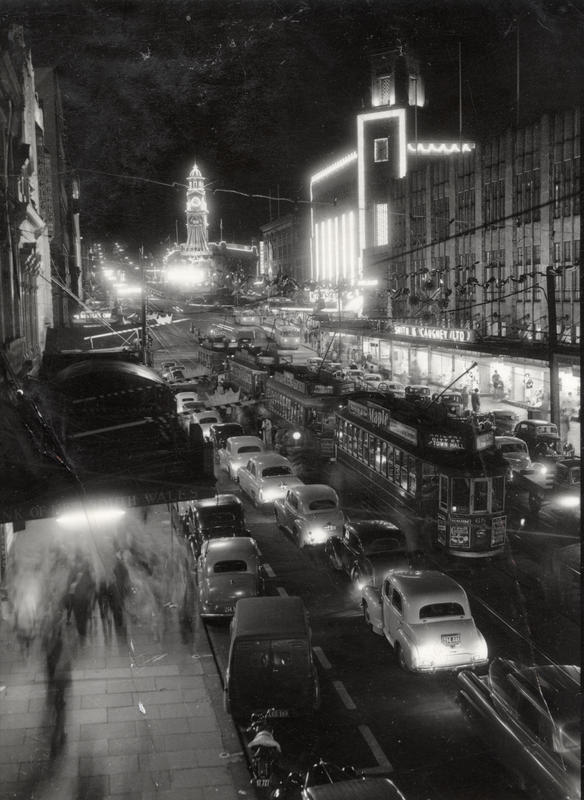
From this point onwards, Graham began to capture the essence and then decline of the Auckland tramway system in photographic form, helped along by the fact that his first job was as a cadet photographer with the NZ Herald, giving the young man access to quality film stock and camera equipment. Staff at the various tram depots got to know Graham well and were more than happy to move trams around the depot yard to suit a specific photographic situation Graham was trying to create.
So, it was in October 1956, Graham met with Mr Ray Gribble, General Manager of the Auckland Transport Board and family friend, to discuss the running of the very last tram, planned for late December that year. The Transport Board had already given Graham blessing to organise most of the last tram events for each route to be closed and where possible, Graham chose trams that had been associated with that route over the years. For
example, the last tram on the Three Kings route in May 1953 was No.77, chosen by Graham because No.77 had been the very first tram down Mt Eden Road when that service opened in May of 1908!! The “Last tram” running’s were mostly all midnight affairs, the tram itself being the last timetabled run for the night and huge crowds were on hand to farewell
this once loved means of transport on each route.

During their conversation, Graham asked Ray Gribble if he would urge the Transport Board to save one of the more modern trams for future generations and suggested the pride of the Auckland tram fleet the Queen Mary No.253. The precedent being that tram No.11 had been held as an example of early Auckland street transport, it being part of the original British built fleet dating back to 1902 and in 1952, had marked 50 years of tram service in Auckland. It seemed logical that one of the last trams, built by ATB staff at their own Workshops in Royal Oak should likewise be saved.
Ray Gribble gave the proposal his full support and promised to raise it with the Board. Graham stressed however, that 253 should be taken out of service now, to prevent any damage from traffic incidents and that the tram should not be used in the last tram procession. Experience had proved with the other “last tram” events, that souvenir hunters would be at the ready and trams on the last day would no doubt be stripped of components by the time they reached the depot!
Leaving the meeting in good spirits, confident that Ray Gribble would make good his promise, Graham headed to Queen Street and photographed the Queen Mary crossing Victoria Street on a journey down to the Chief Post Office, adjacent to the Ferry Building. Soon after, tram No. 253 passed him again, this time the destination had changed to EPSOM DEPOT with a
surprised crew being told by the dispatcher at the bottom of Queen Street that the tram was being taken off the road, and they were to finish early, returning the tram to the depot. Thursday October 4, 1956 was the Queen Mary’s last day in revenue service.
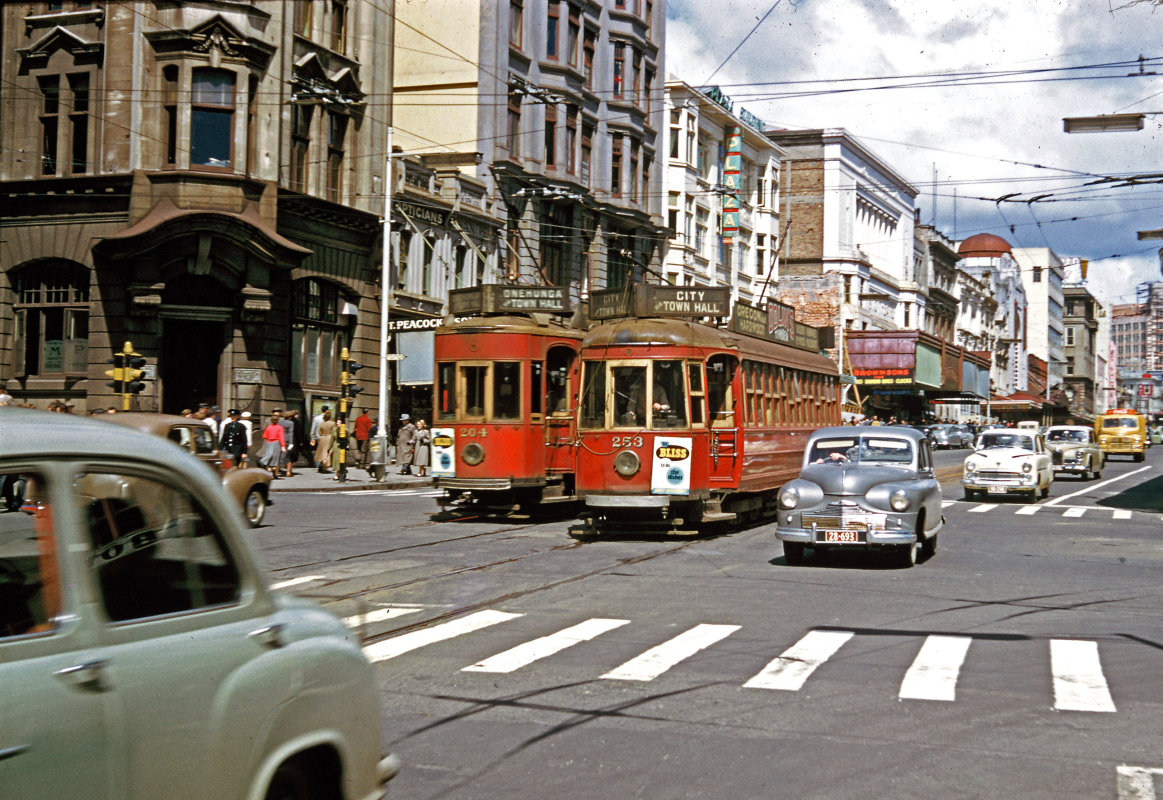
December 29, 1956 saw the running of the last Auckland tram. During the morning, trams ran a shuttle service between the Chief Post Office (CPO), at the bottom of Queen Street, up to Karangahape Road, for Aucklanders who wanted to take the opportunity of a last ride on the trams for free. After short speeches outside the CPO at 10.30am, the procession of four trams made their commemorative 'Last Tram' parade from Queen Street back to the Epsom Tram Depot, with No.242 being the official “Last tram” marking the end of the Auckland tramway system. The NZ Herald wrote that “A golden chariot drawn by ten white horses could scarcely have attracted more attention than the last Auckland tramcar!”.
An interesting twist of fate raised itself that day – on November 17, 1902, the day the system opened, the Auckland Electric Tramways Company had 43 trams in the Ponsonby Depot ready to go. When No.242 arrived back at the Epsom Depot that Saturday morning December 29th, 1956, the Auckland Transport Board had 43 trams available for service – an interesting fact but a coincidence none the less.
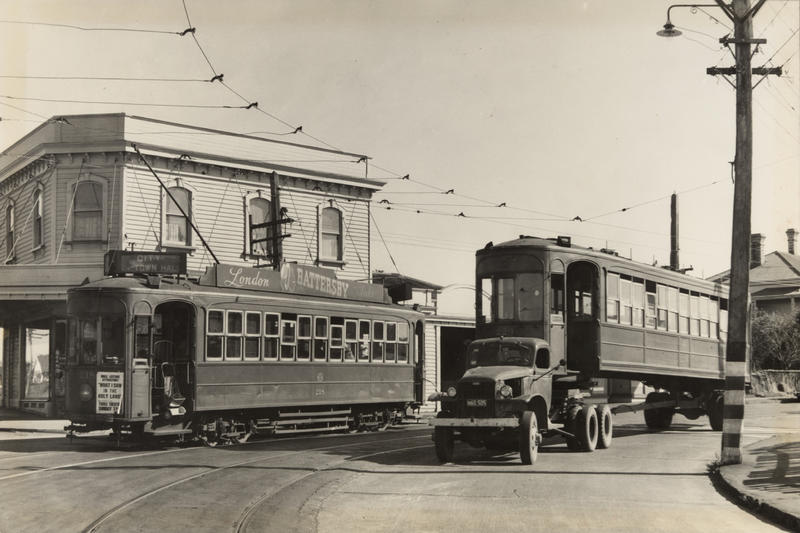
During early 1957 each of the remaining 43 trams was driven the 1.5 kms down the road
from Epsom Depot to the Royal Oak Manukau Road Workshops. Here, once stripped of seats, metalwork, control and running gear, a trucking company took the tram bodies down to Thames, where they then on-sold the bodies to become garden sheds, greenhouses or more commonly, holiday homes – baches! Today if you drive around Mangawhai up north or around the Thames Coast and Coromandel, you will find dozens of old Auckland tram bodies now serving a new life as baches. With a bit of TLC, they prove that the well-built wooden bodies of these 1930s and 40s trams, have survived far better than many of today’s modern
homes!
It was at this time that Graham Stewart got a call from the Transport Board, asking him to contact Ray Gribble at his nearest convenience. It was then that Ray advised that despite the
Transport Board’s earnest efforts to find an organisation or group to take on the care of the Queen Mary, there was simply no interest. Even the War Memorial Museum had rejected the tram, so in respect of Graham’s interest and passion in the tramway, the Board was going to present the tram to him, together with assorted spare parts, in the hope that at some time in the future, he might be able to run the tram! Here was this 24-year-old young man, recently married, without a penny to his name, now with a 15-ton tramcar in his care. While surprised but grateful, Graham knew that he would very soon need to remove “his” tram, from the Epsom Depot and find a home for it and this would require some serious coin.
Graham and his new wife, then visited members of the Sterling family, his new in-laws, at
Matakohe, south of Dargaville, and shared with them on a projector, some colour slides of their wedding (35mm colour slides were all the rage in those days). At the end of the slide show, he asked if anyone would be interested in seeing some colour shots of the last trams
running through the streets of Auckland, which led on to a discussion regarding his new “baby”, the Queen Mary – No.253. This was to see the start of an exciting venture. One of the family members was his wife’s cousin, Mr Merv Sterling, who was a farmer at Matakohe, and was part of the Sterling family which had set up the now famous Kauri Gum Museum (now known as the Kauri Museum) in Matakohe. Merv had been involved in a bad tractor accident and was unable to carry out his normal work and was desperate for something to
get his teeth in to – the preservation of an old tram was just the ticket. With Merv, together with other members of the family, they formed what today we would call a “Charitable Trust” – the “Old Time Transport Preservation League”.
Graham also called on his older brother Ian, an electrical engineer, to become involved, as he as just the person you need when it comes to handling large electrical vehicles. Ian was to become a supporter and worker from day one; and for decades was the backbone of the creation of the electric tramway at Western Springs (MOTAT), Auckland. He gave of his life for the cause.
Merv Sterling worked tirelessly to raise funds to give the League some capital and in May 1957, the Old Time Transport Preservation League held their first meeting, on board their very own tram No.253. Following the meeting several joyrides were had between the Workshops
and the Epsom Tram Depot with the blessing of the ATB, before the Queen Mary was parked up at the Workshops pending her next move. This was to be on May 24 1957, when the tram
travelled by road transport to her new home at Matakohe, where Merv Sterling had donated some of his land for a large shed, together with some short lengths of rail on which the tram could sit.
Then in June the ATB invited the League to attend at the Epsom Tram Depot, to witness the running of the last three trams from Epsom to the Workshops for stripping and disposal. At the end of this sad group of three trams was Streamliner No.248, a sister to the Queen Mary No.253. After that final pilgrimage had been made to the Workshops, No.248 was ultimately the very last tram to turn a wheel in the streets of Auckland.
It transpired that one of the other members of the Old Time Transport Preservation League, Merv Sterling’s Uncle, Dick Sterling, a retired Auckland tram Motorman, had been appointed as tram No.248’s first Motorman when it entered service as new in 1938. Merv decided 248 was part of the “Sterling Family” and it was arranged with the ATB for Merv to purchase the tram for scrap value. Graham had a quiet word with the Workshop manager, and 248 was to be left fully complete. Merv subsequently donated No.248 to the League’s collection and as the last trams departed the Workshops for Thames, Streamliner No.248, followed the path of her sister, No.253 by truck to Matakohe, where she joined her sister tram in the large shed.
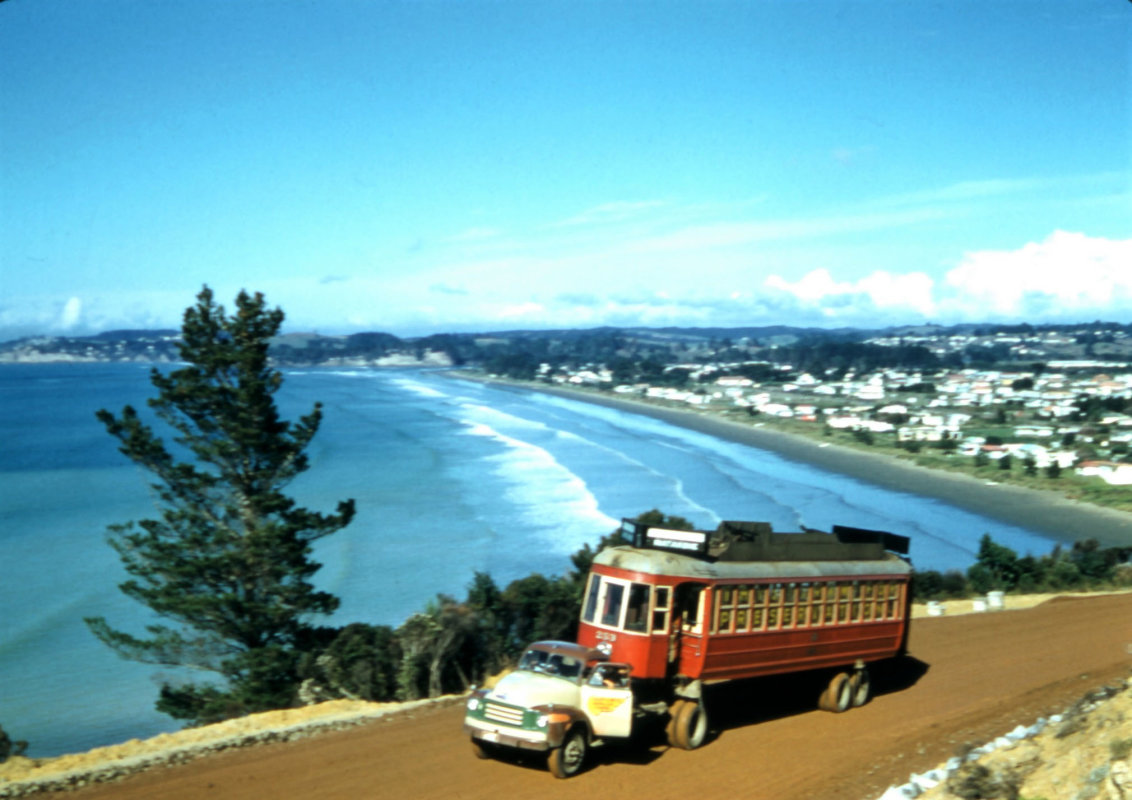
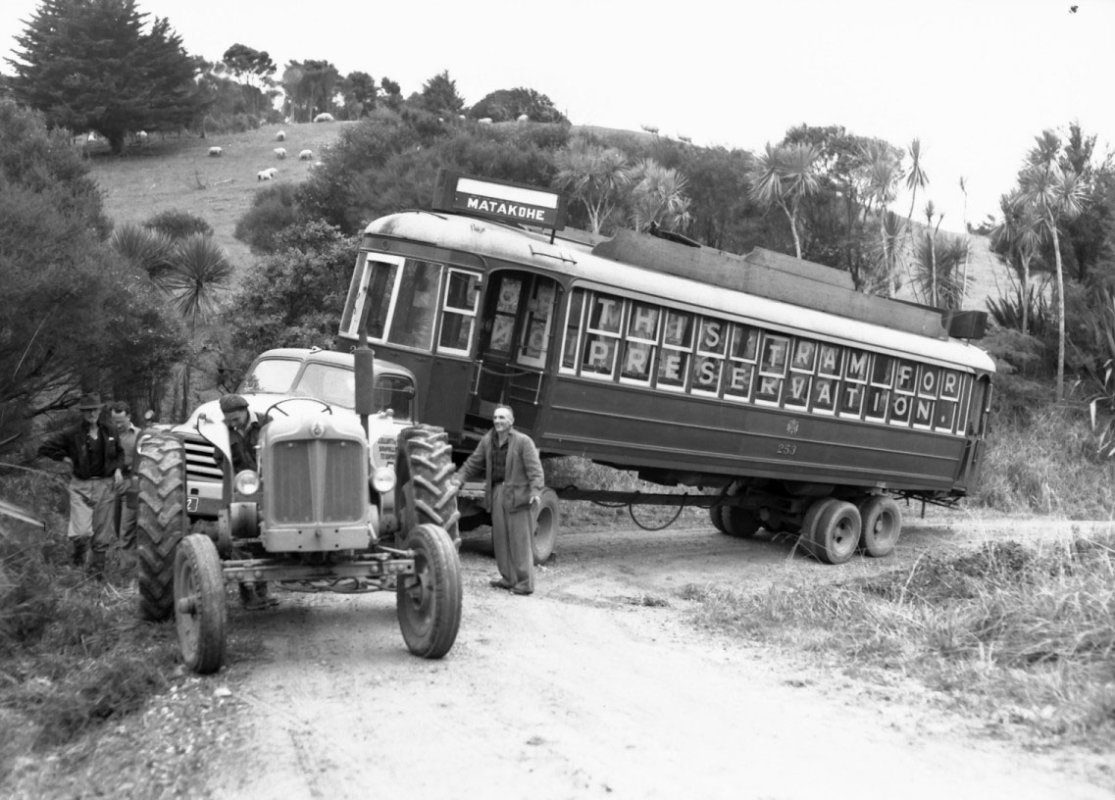

Soon after the two trams were safely installed at Matakohe, news broke that the Wellington City Corporation Tramways were to step up their tram to trolley bus conversion program and that the last tram to run in Wellington and now New Zealand would be in early 1964. With the League’s agreement, both Merv, Graham and his brother Ian, decided it was time to increase the “trophies in the cabinet” and add some Wellington trams to the collection.
Armed with a letter of introduction from the Auckland Transport Board’s Ray Gribble, they met with the Manager of the Wellington Tramways who sent them out to the Kilbirnie Depot. The Depot Manager indicated a line-up of trams that were, in a day or so, to “go for scrap”. In Wellington this was very different to Auckland, Wellington trams were taken out to the Happy Valley, where they were doused in a mixture of kerosene and petrol and put to the match! With the wooden bodies reduced to charcoal all that remained was the twisted steel work which was taken away for scrap. This was the fate that awaited the line-up of trams inspected by the three Aucklanders.
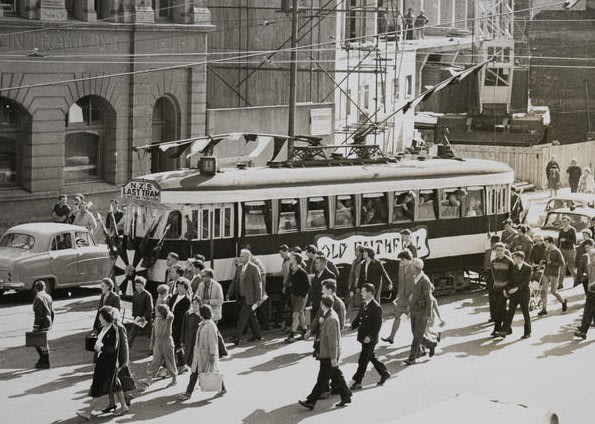
Graham, Ian and Merv chose some prize vehicles that day – the last surviving Wellington
double decker No.47 – built in 1906 and one of six double deckers that could seat almost 100 passengers earning them the name of “Big Ben”. One of the first series of Double Saloon type trams – No.135 built in 1921 was a great example of the most common type of Wellington tram, they got their name from their semi open centre and enclosed end compartments or saloons. Finally, there was a small four-wheel works car No.301 that was still being used but was promised to the League once it was no longer required. The trams were driven to the Newtown Tram Depot where the Corporation Tramways were happy to provide secure storage until the system closed in 1964, the League would then need to arrange their removal. An offer was also made to the two men to come back and select a couple of the later Fiducia class trams, these were the more modern trams that would keep the
tramway going until closure.
We now come to 1960, the League’s collection had grown to include a whole range of transport and technology from all over the country, but finances were almost exhausted. After plans fell through to have the museum relocated to Whangarei and being taken on by the Council there, the League was desperate not to lose everything and joined forces with the Royal Aeronautical Society to canvas the Auckland City Council about the establishment of a museum at Western Springs. At this disused site was the large pumphouse building that contained the very rare steam driven Beam Engine that once pumped the water from Western Springs Lake up to the Ponsonby Reservoir, this provided Auckland’s first drinking water supply until the 1930s. Although the boilers had gone from the boiler house next door, the Beam Engine was still complete and in situ.
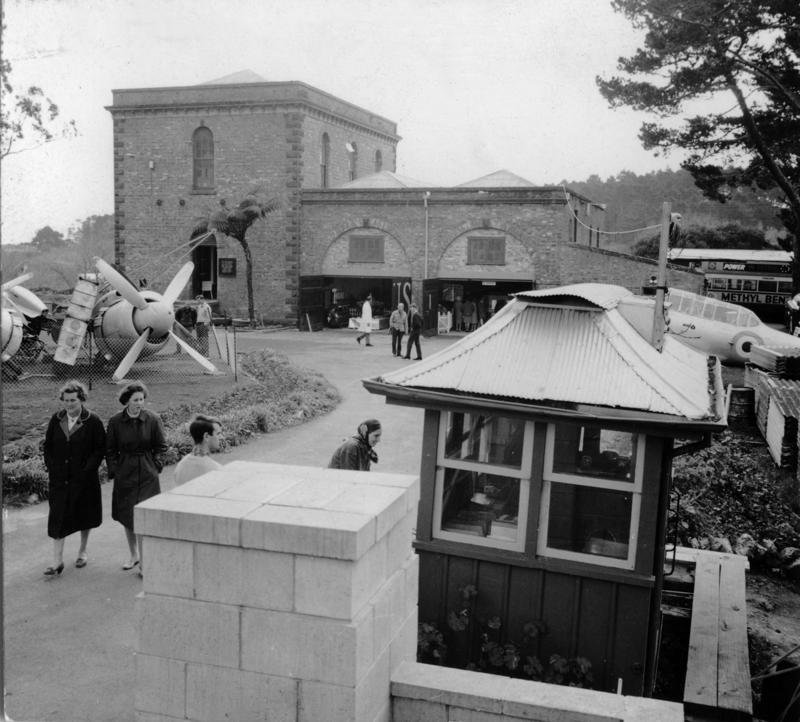
A meeting was called at the Town Hall chaired by the then Mayor of Auckland Mr D.M. Robinson (later Sir Dove Myer Robinson) and attended by 27 different organisations, all working to preserve items of Auckland’s heritage and all needing a home. The Western Springs site was made available and all these different groups brought their collections in
to form a Museum of Transport and Technology – MOTAT was born.
With the League's collection and the two Auckland Streamliners brought back to Auckland and relocated to Western Springs, this marked the winding down of the Old Time Transport Preservation League. When the Wellington system closed in May 1964, the three chosen trams plus three of the modern Fiducia class trams were all road freighted to Auckland and delivered to the MOTAT site.
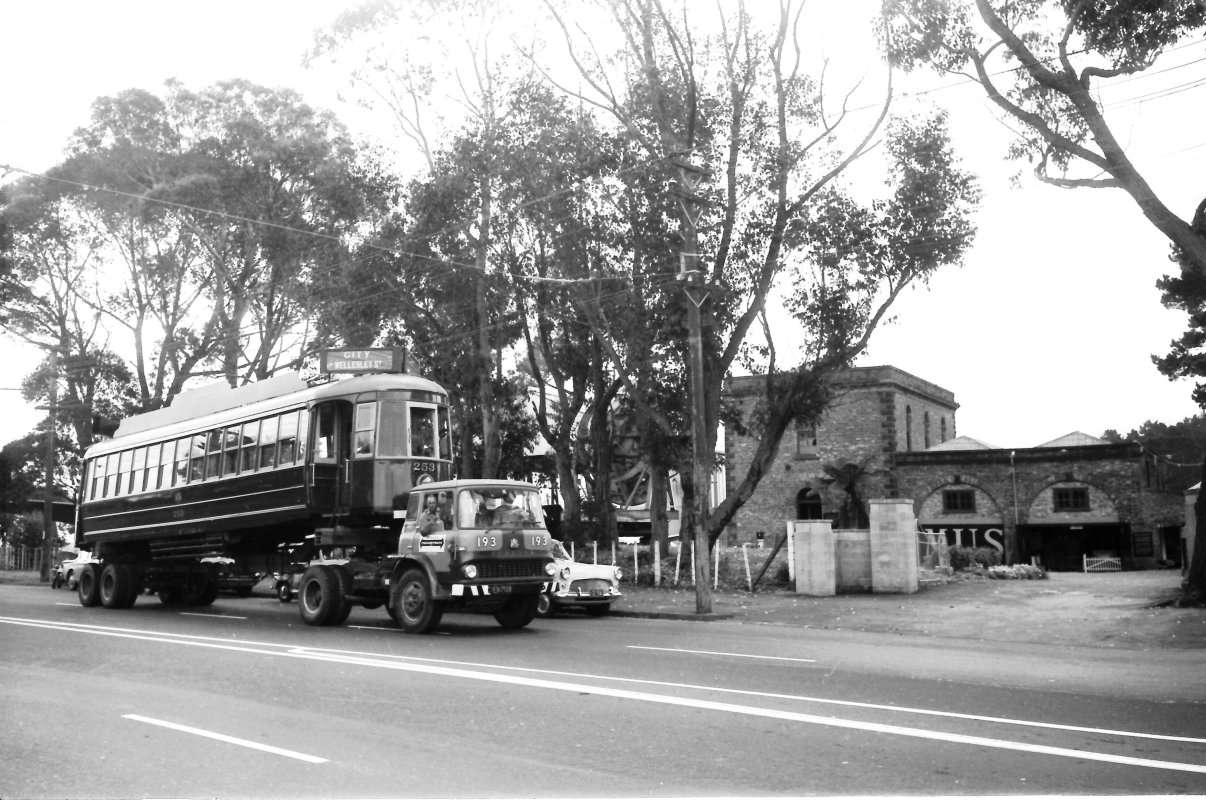
The Tramway team began construction of a tram line inside the MOTAT grounds and the
Auckland Regional Authority, which took over from the Auckland Transport Board in 1964, offered to take the Queen Mary back to the Workshops and give her a fresh coat of paint. Finally, in December 1967, just 11 years after the last Auckland tram had run, trams were back, now running around the MOTAT site. The Queen Mary No.253 and Wellington Fiducia
No.257 were the two trams that ran the passenger service on the approximately 300 metres length of track, with Wellington Works Car No.301 coming out as a “play-thing” on odd occasions.
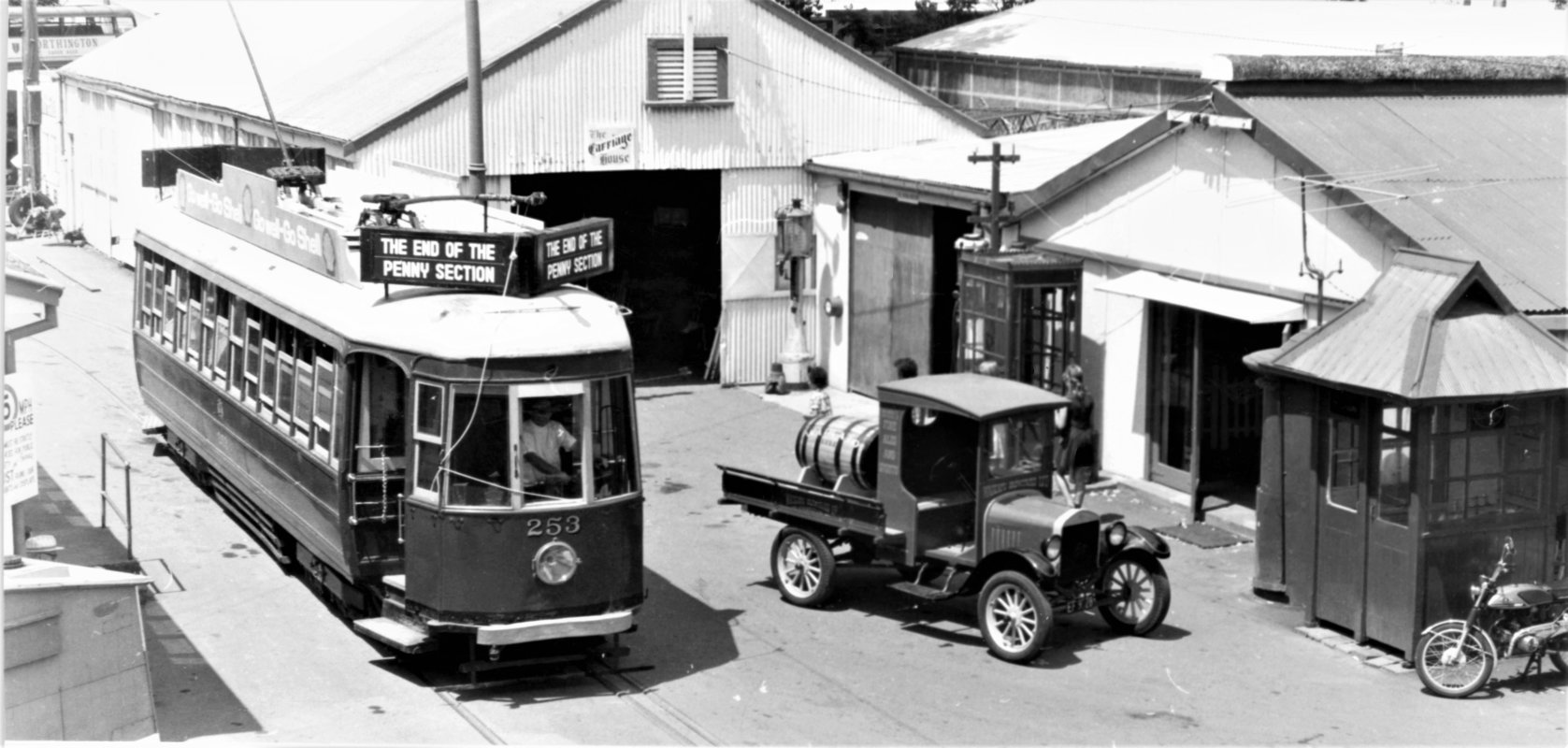
In September 1972, Auckland tram No.11, stored at the Auckland Zoo, was donated by the City Council to MOTAT. A few months later, Ian Stewart and the electrical team checked out 11’s electrics and when all seemed OK, the trolley pole went up on the wire and No.11’s air brake compressor ticked away as if the tram had never been off the road. No.11 ran at MOTAT for a few months before undergoing full restoration back to 1912 period. Returning to the rails in 1977, No.11 was able to celebrate the 75th anniversary of the opening of Auckland’s electric tramway system in 1902.
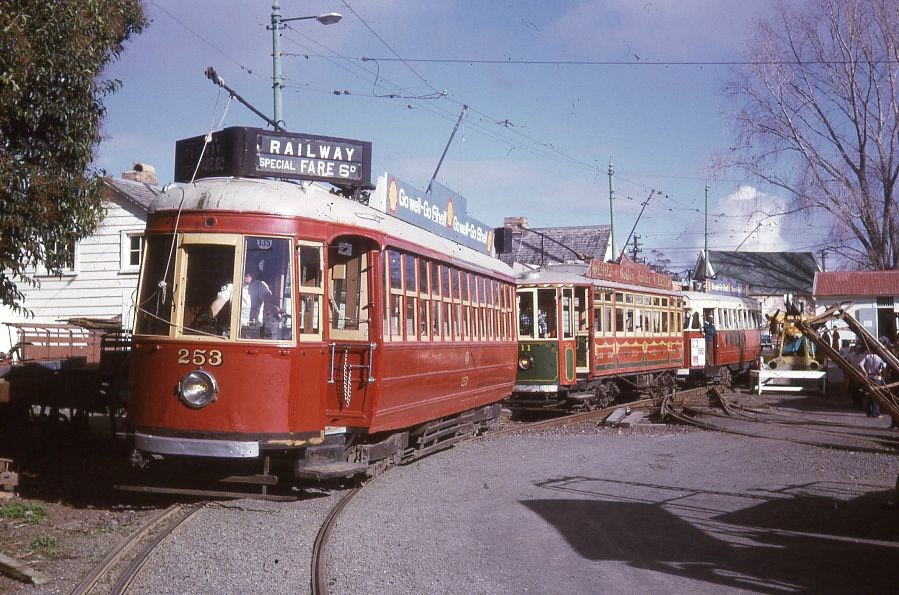
Around this time MOTAT announced that it was to extend the tramway, out the gates and down the side of Great North Road into Motions Road and down to the Auckland Zoo. To this end it was realised that another large capacity tram would be needed, so it was decided to fully restore Streamliner No.248.
In December 1980, Streamliner No.248 was completed in time for the opening of the tramway extension. However, with 248 now in service, it was time for the Queen Mary to be retired, for she had been the museum’s main workhorse since opening in 1967. It had been calculated that 253 had carried more passengers at MOTAT than she did in Auckland streets. Storage out in the weather during these early years had taken its toll on the tram’s bodywork, and the Queen Mary was moved to offsite storage pending future restoration.
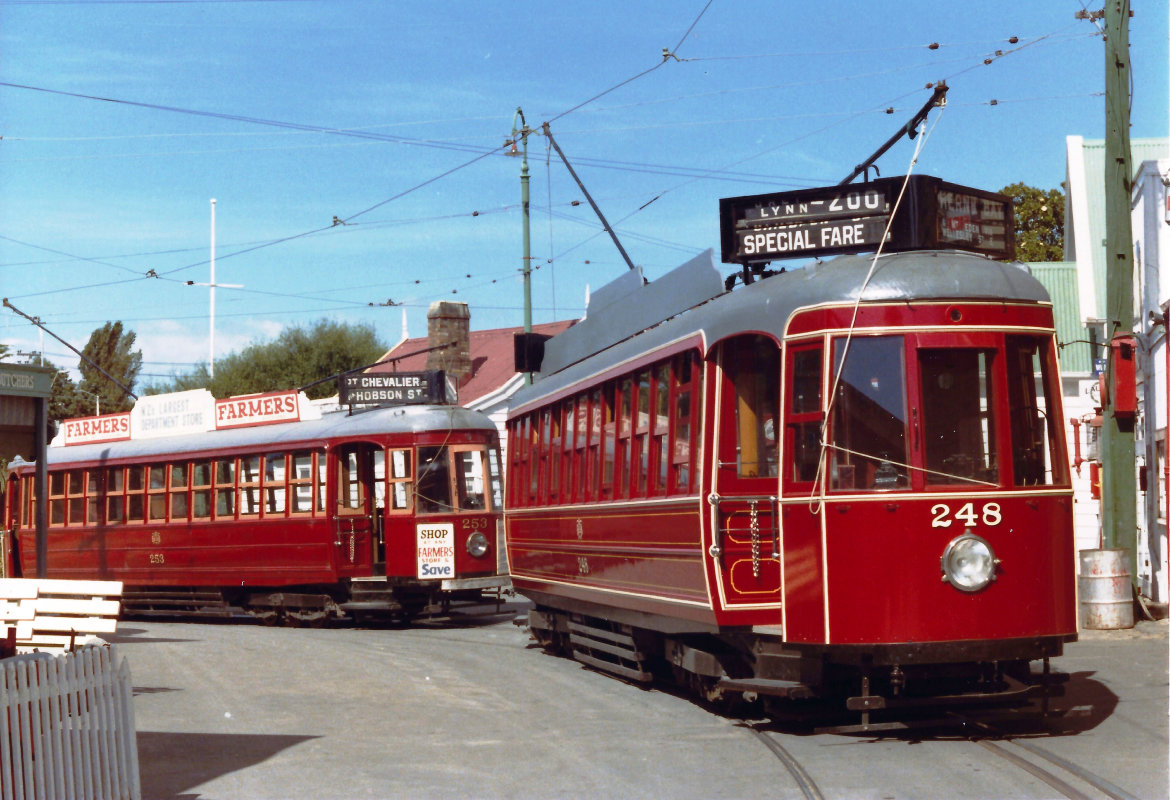
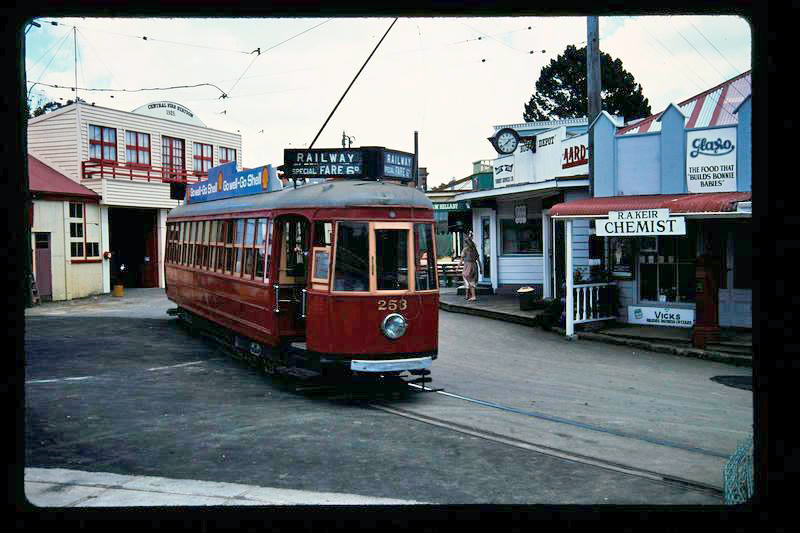
REFERENCES
Cresswell, John. 1976. MOTAT: Museum of Transport and Technology of New Zealand (Inc.). Auckland: Paul Hamlyn.
Gribble, C.R. 1977. The Years Before – The Story of the Old Time Transport Preservation League Inc. In Museum News, December 1977.
Stewart, Graham. 1973. The End of the Penny Section. New Zealand: Grantham House.
Stewart, Graham. 1996. Always a Tram in Sight. New Zealand: Grantham House.
Stewart, Graham. How the Old Time Transport Preservation League was born (private
notes)Walker,Cyril. 1981. An Auto biography by on his career with the Auckland Transport
Board and later the A.R.A.; Memories of a Tram Racing Man: Cyril Walker. In
Auckland Regional Authority Review, February 1981.
CITE THIS ARTICLE
Duncan, James. MOTAT's Queen of the Rails. MOTAT Museum of Transport and Technology. First published: 24 August, 2021. URL: www.motat.nz/collections-and-stories/stories/motats-queen-of-the-rails